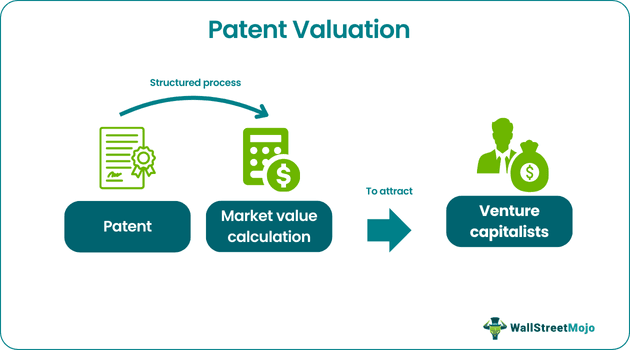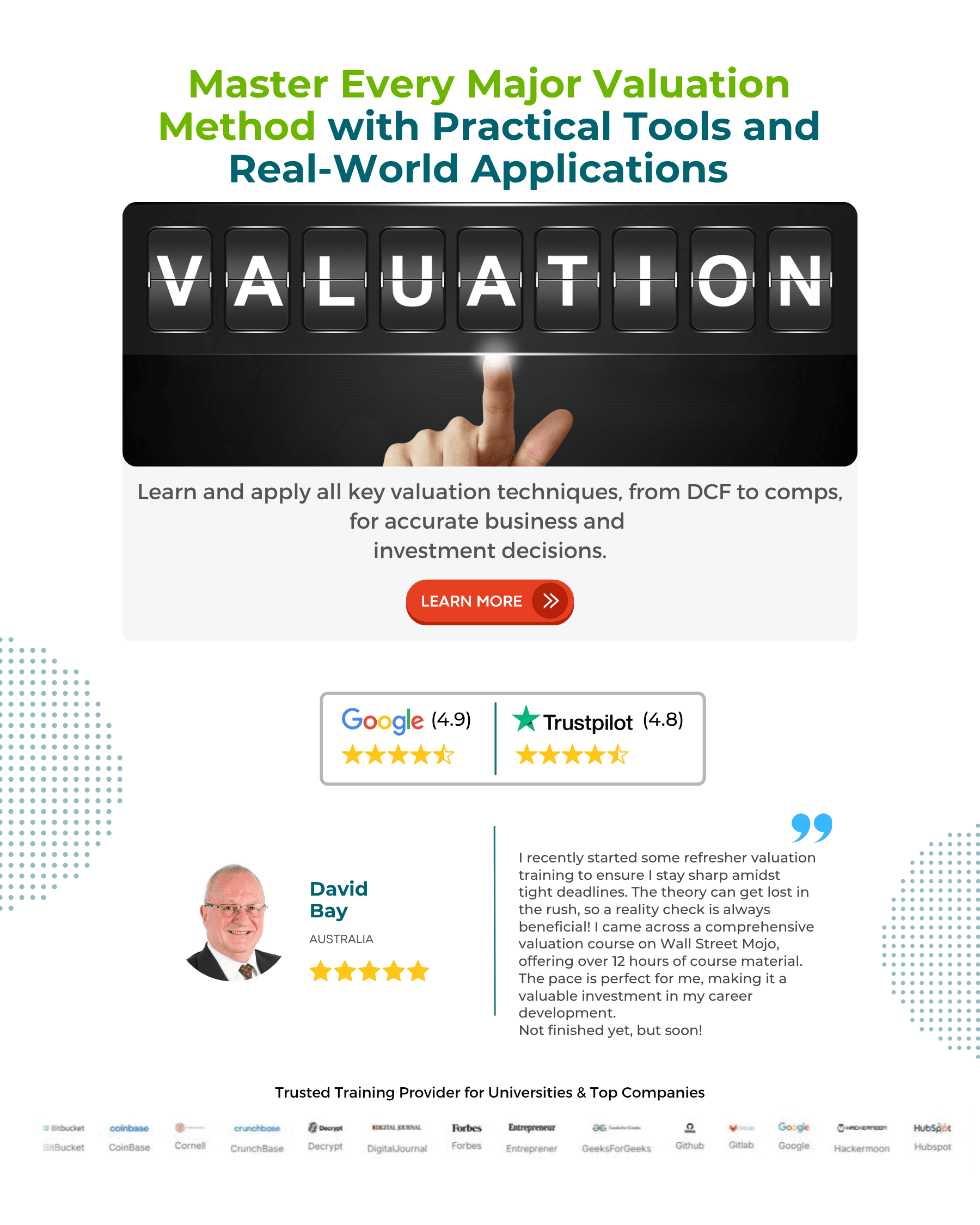Table Of Contents
What Is Patent Valuation?
Patent valuation is a structured process used to determine the market value of intangible assets such as patents. Its primary objective is to calculate a value that aligns closely with the market, allowing patent owners to generate income from their patents.

The patent valuation model carries significant significance for companies. It is intricately linked to a company's reputation and goodwill while defining the patent's actual value in the global market. Moreover, it serves as a tool to forecast future sales for the company. However, it is essential to approach valuation carefully, as an inaccurate assessment can result in an overinflated value.
Key Takeaways
- Patent valuation involves determining the value of intangible assets like patents using specific methods or approaches.
- The three major approaches to patent valuation are cost, income, and market approach, each consisting of eight methods.
- Patent owners can assess the value of their patents by considering similar transactions or projecting future cash flows.
- The valuation method can also be utilized to attract capital from venture capitalists and investors, with significant applications in technology and pharmaceutical firms.
Patent Valuation Explained
Patent valuation is an important metric for valuing intangible assets like patents and intellectual property rights. A patent is an intangible asset that holds the idea of the invention. It enables the owner to limit the information and technology to themselves. However, intruders must pay a fine if they try to access it. But, in other cases, the owner may use the patents to generate money. For example, if a technology firm sells its software patent, they earn a huge out of it. Therefore, businesses try to process the patent valuation model.
There are various methods and approaches to the patent valuation process. Plant, utility, and design patents are the basic ones. However, purpose and application depend on the type of patent. Owners of patents have to register them with the concerned patent office. It authorizes a legal right to own till the duration of the patent. The US Patent and Trademark Office provides this service in the United States.
During the patent valuation process, two factors must be considered. It includes the existence of a marketplace for the patent and potential growth for the same. The absence of market or demand can create no value despite its usefulness. For instance, the pharmaceutical firm that created the medicine will get the first patent. Till the patent is operational, so are the rights. However, after expiry, other firms can also access and create similar medicine and sell it as "Generic medicine." Therefore, the major application of the patent valuation model process is visible in technology, pharmaceutical firms, and inventors.
Approaches And Methods
According to the IDW (Institut der Wirtschaftsprüfer) ES 5 standards, there are three approaches and eight methods for calculation. Let us look at these approaches used in the patent valuation report:
#1 - Market Approach
This approach is used by patent valuation firms when there is an active market. However, to be active, the market must fulfill certain criteria. It includes homogenous products, availability of the buyers and sellers, and a transparent pricing strategy.
Furthermore, this approach has two methods: active market valuation and analogous. In the former, similar transactions get compared and used for valuation. At the same time, analogous methods using historical deals are considered. So, if a chip patent was traded at $1 million, similar patents may be valued at a price same or higher. However, it is necessary to look at the similarities and differences of the patent.
#2 - Income Approach
Under the income approach, the owner assumes the value of the patent derives from the future sale price. In short, the future cash flows determine the current value. Here, the discounted cash flow (DCF) model is applicable. Yet, there are other methods, too, under this approach. They are as follows:
- Direct Cash Flow Prognosis Method
It refers to the estimation of the future cash flows of the patent.
- Relief-from-Royalty Method
The owner is debarred from paying royalties or fees in the relief-from-royalty method. As a result, patent valuation firms can easily calculate the value of patents.
- Incremental Cash Flow Method
Under this method, additional cash flows are generated by owning and not using the patent.
- Multi-Period Excess Earnings Method
This method considers the incremental earnings made during the duration of the patent.
#3 - Cost Approach
Lastly, the cost approach considers the replacement and reproduction cost method. The cost of replacing or reproducing a similar patent will decide its value.
Examples
Let us look at the examples of patent valuation report for a better understanding of the concept:
Example #1
Suppose Calculus Ltd is a firm specializing in making electronic gadgets. They have a strong research and development (R&D) team. Thus, they tend to release new products with specialized patents. Therefore, they need to register them with the patent office. In the next few months, all patents were registered. However, one of them was about to expire. Thus, Calculus Ltd calculated the valuation of their patent.
Since their patent has similarities with the previous patents, a market approach was used. At the end of the patent's duration, it was sold at a price 2x times more than other patents.
Example #2
In a recent article dated June 2023, it has been reported that the US Patent and Trademark Office has implemented a new set of rules aimed at remaking the post-grant proceedings at the Patent Trials and Appeals Board (PTAB). The primary objective of these rules is to safeguard patent owners from market speculation firms that deliberately aim to manipulate and lower patent valuation reports.
This development in the patent landscape signifies a significant step towards maintaining the integrity and accuracy of patent valuations. By implementing stricter regulations and safeguards, the US Patent and Trademark Office aims to protect patent owners from undervaluation practices and ensure a fair assessment of the true value of their patents.
This example highlights the importance of regulatory measures in the patent valuation process, emphasizing the need to combat any attempts to lower the value of patents artificially. By addressing these concerns, the patent system seeks to provide a more transparent and reliable environment for patent owners to assess the value of their intellectual property.
Advantages And Disadvantages
Advantages
- It allows the valuation of intangible assets.
- Patent valuation allows the company to predict future cash flows.
- It boosts research, development, and innovation in the firm.
- This method is useful for intellectual property licensing.
- It also helps in attracting venture capitalists and investors based on valuation.
- Enables development of patent protection strategies.
Disadvantages
- Various market assumptions and subjectivity can cause wrong patent valuation.
- The value might change with the location of the marketplace.
- There can be various risks and patent infringement attached to the valuation.

